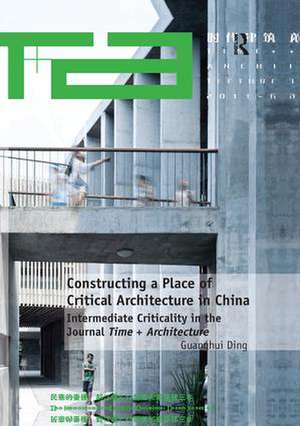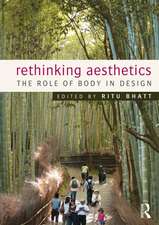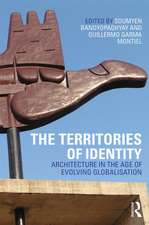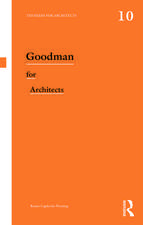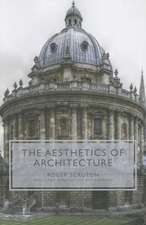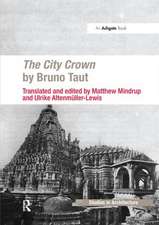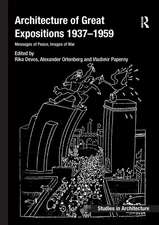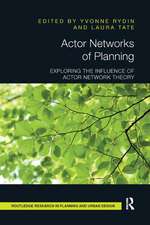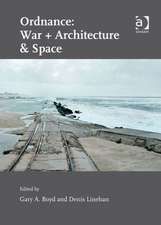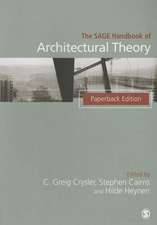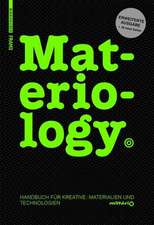Constructing a Place of Critical Architecture in China: Intermediate Criticality in the Journal Time + Architecture
Autor Guanghui Dingen Limba Engleză Paperback – 12 oct 2017
Preț: 325.34 lei
Preț vechi: 379.25 lei
-14% Nou
Puncte Express: 488
Preț estimativ în valută:
62.26€ • 67.61$ • 52.30£
62.26€ • 67.61$ • 52.30£
Carte tipărită la comandă
Livrare economică 22 aprilie-06 mai
Preluare comenzi: 021 569.72.76
Specificații
ISBN-13: 9781138573321
ISBN-10: 1138573329
Pagini: 256
Dimensiuni: 174 x 246 mm
Greutate: 0.45 kg
Ediția:1
Editura: Taylor & Francis
Colecția Routledge
Locul publicării:Oxford, United Kingdom
ISBN-10: 1138573329
Pagini: 256
Dimensiuni: 174 x 246 mm
Greutate: 0.45 kg
Ediția:1
Editura: Taylor & Francis
Colecția Routledge
Locul publicării:Oxford, United Kingdom
Notă biografică
Guanghui Ding received a PhD in architecture from the University of Nottingham, UK. His research concentrates on the interaction between the critical practice of architecture and politics in modern and contemporary China.
Recenzii
’The architectural revolution in China in the past 30 years is daunting for any outsider. Through its study of a local architectural journal, Dr Ding unfolds a picture of how critiques and experiments have changed the profession and townscapes in China. Logically and lucidly written, the book grasps the representative trends and facts of the country during its drastic transformation.’ Charlie Q.L. Xue, author of Building a Revolution: Chinese Architecture Since 1980 ’Guanghui Ding’s study provides us with a very useful introduction to modern architecture in China. Even more insightful is the particular focus on the highly influential journal Time + Architecture, exploring how critical attitudes may be expressed in a world of complex aesthetic, socio-economic and political conditions. Highly recommended.’ Iain Borden, The Bartlett School of Architecture, University College London, UK ’With excerpts from Time+Architecture and several other periodicals, Guanghui Ding has made an insightful and engaging case for an alternative, critical and ultimately more interesting interpretation of an increasingly influential strand of contemporary Chinese architecture by new generations of architects operating beyond the realm of design institutes and commercial practices.’ Peter G. Rowe, Harvard University, USA
Cuprins
Chapter 1 Introduction; Part I Theoretical and Historical Contexts; Chapter 2 Preliminary Reflections on the Critical Practice of Architecture; Chapter 3 A Historical Sketch of Modern Architecture in Twentieth-Century China; Part II Case Study; Chapter 4 The History and Programme of the Journal Time + Architecture; Chapter 5 Experimental Architecture as a Critical Discourse; Chapter 6 The Search for a Critical Architecture in the Urban Process; Part III A Critical Assessment; Chapter 7 Towards a Dialectical Interpretation of Criticality; Chapter 8 Conclusion: The Intermediate Criticality;
Descriere
For the past 30 years, the Chinese journal Time + Architecture (Shidai Jianzhu) has focused on publishing innovative and exploratory work by emerging architects based in private design firms who were committed to new material, theoretical and pedagogical practices. This book assesses the contribution the journal has made to the emergence of a critical architecture in China, in the context of how it was articulated, debated, presented and perhaps even ’produced’ within the pages of the publication itself.
